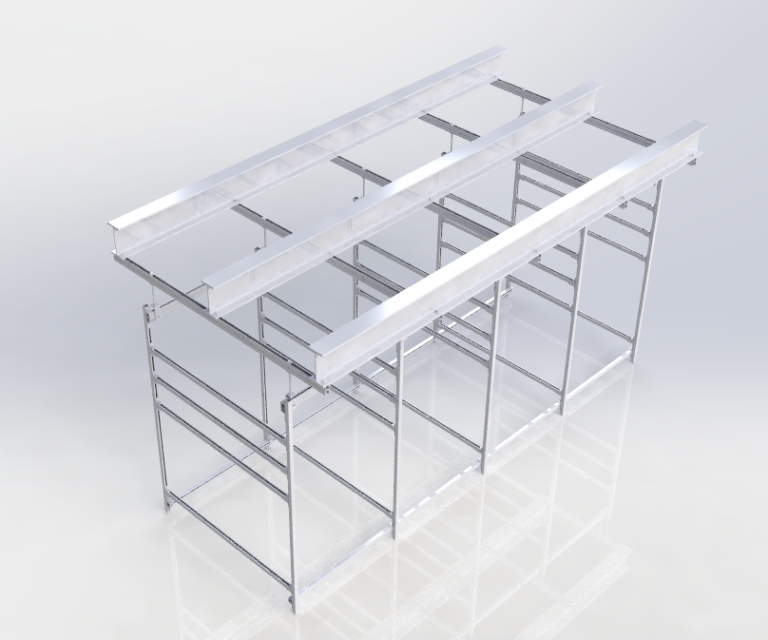MODULAR METAL FRAMING STRUCTURES

Modular metal framing structures are commonly used in data centers to provide a versatile and adaptable framework for supporting various components, including server racks, cable trays, power distribution systems, and cooling equipment. These structures are essential for optimizing space utilization, ensuring equipment stability, and facilitating efficient airflow within the data center.
Here are key aspects of modular metal framing structures for data centers:
1. Rack Mounting: The primary function of modular metal framing structures in data centers is to support server racks. These structures should be designed to accommodate different rack sizes and configurations, allowing for easy installation and adjustment as needed.
2. Adjustability: Modular framing systems should be highly adjustable to cater to the changing needs of the data center. This includes adjustable rack heights, depths, and widths to accommodate various server and equipment sizes.
3. Cable Management: Effective cable management is crucial in data centers. Modular metal framing systems should incorporate features like cable management channels, brackets, and loops to organize and route cables neatly. This helps reduce cable clutter, enhance airflow, and simplify maintenance.
4. Hot/Cold Aisle Containment: Some modular framing systems are designed to support hot/cold aisle containment solutions. These structures create a barrier between the hot and cold air streams, improving cooling efficiency and preventing hot air recirculation.
5. Grounding and Bonding: Proper grounding and bonding are essential in data centers to ensure electrical safety and minimize the risk of electrical faults. Modular framing systems should include grounding provisions for racks and equipment.
6. Strength and Stability: Data center equipment can be heavy and valuable. The framing system should provide sufficient structural strength and stability to support the weight of servers and other hardware while minimizing the risk of vibrations or sway.
7. Modularity: As the name suggests, modular framing systems are built from standardized components that can be easily assembled and reconfigured. This modularity allows for rapid deployment and expansion, reducing installation time and costs.
8. Ease of Maintenance: Access to the front and rear of server racks should be unobstructed to facilitate maintenance and equipment servicing. The framing system should enable quick and straightforward removal and replacement of servers.
9. Antistatic Properties: To minimize electrostatic discharge (ESD) risks, some modular framing systems are designed with antistatic properties, including conductive coatings or materials.
10. Compatibility: It’s essential to ensure that the chosen modular framing system is compatible with industry-standard server rack sizes and form factors, as well as other data center infrastructure components.
11. Powder-Coated Finish: Many modular framing structures are finished with a powder coating for durability and corrosion resistance. The finish can also contribute to the aesthetics of the data center.
12. Safety and Compliance: Data center structures must comply with relevant safety standards and building codes. Ensure that the chosen modular framing system meets these requirements.
13. Load Rating: The framing system should have a specified load rating to ensure it can support the weight of equipment and accessories without compromising safety.
By selecting and configuring the right modular metal framing system, data center operators can create a flexible and efficient infrastructure that adapts to their evolving needs while providing the stability and organization required for optimal performance and reliability
